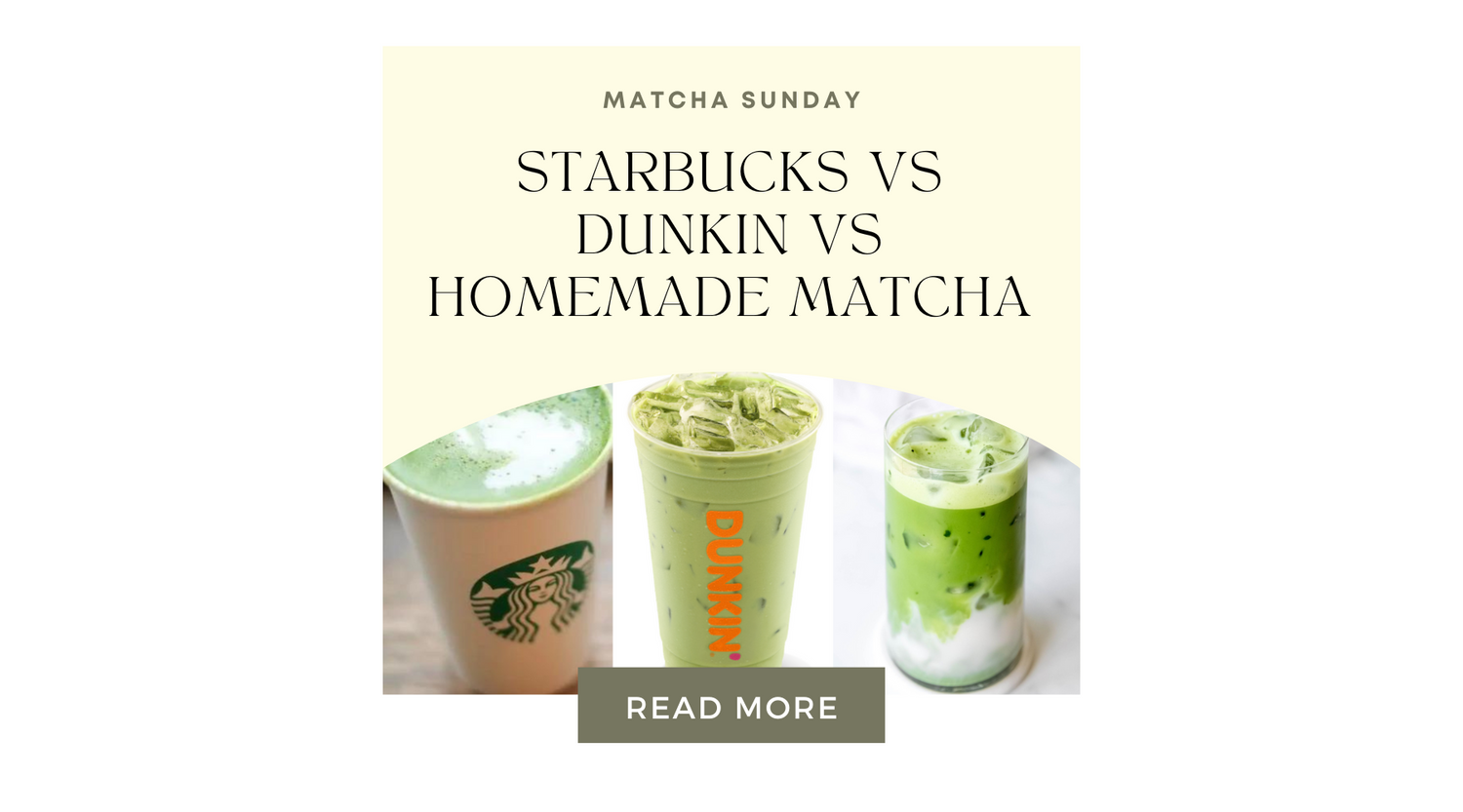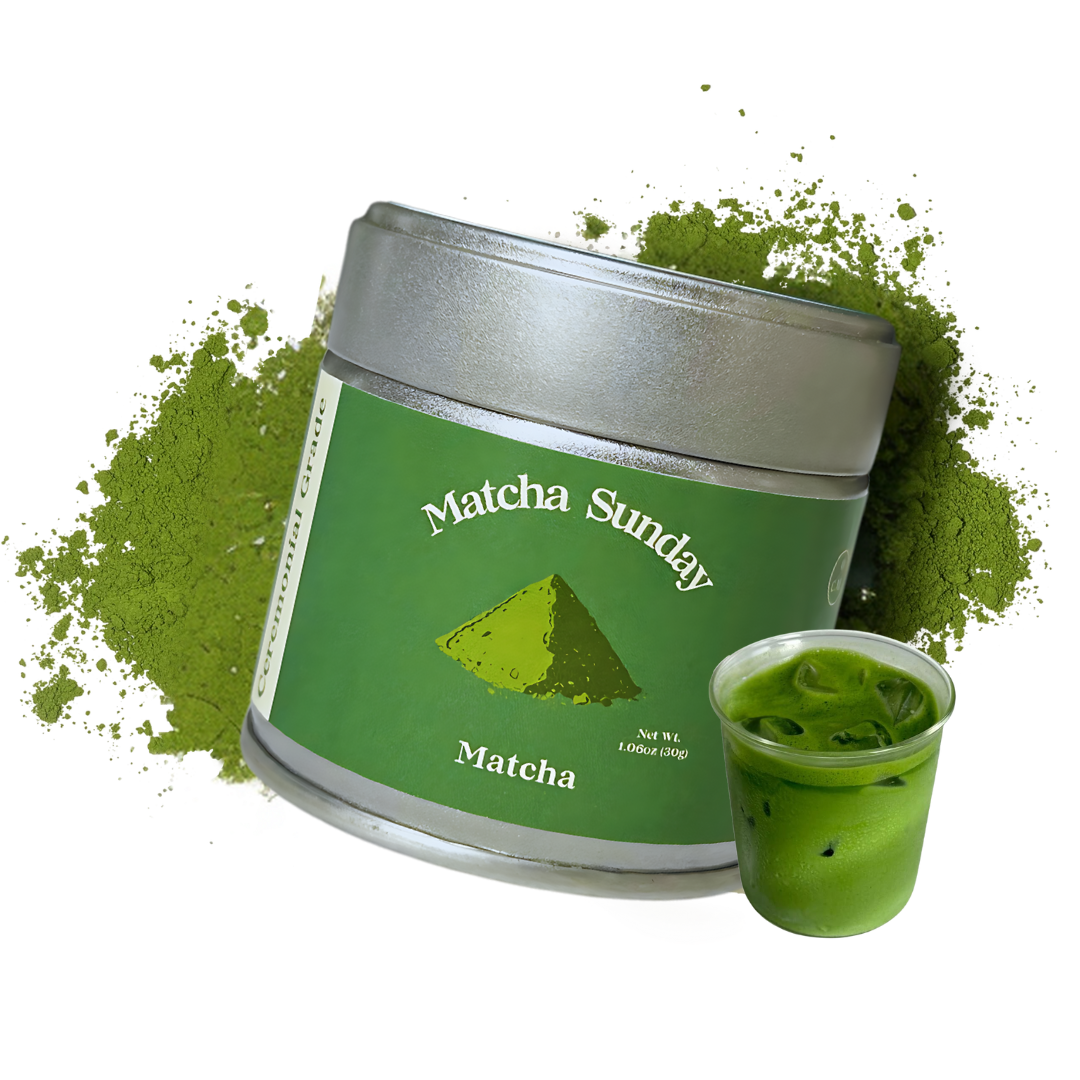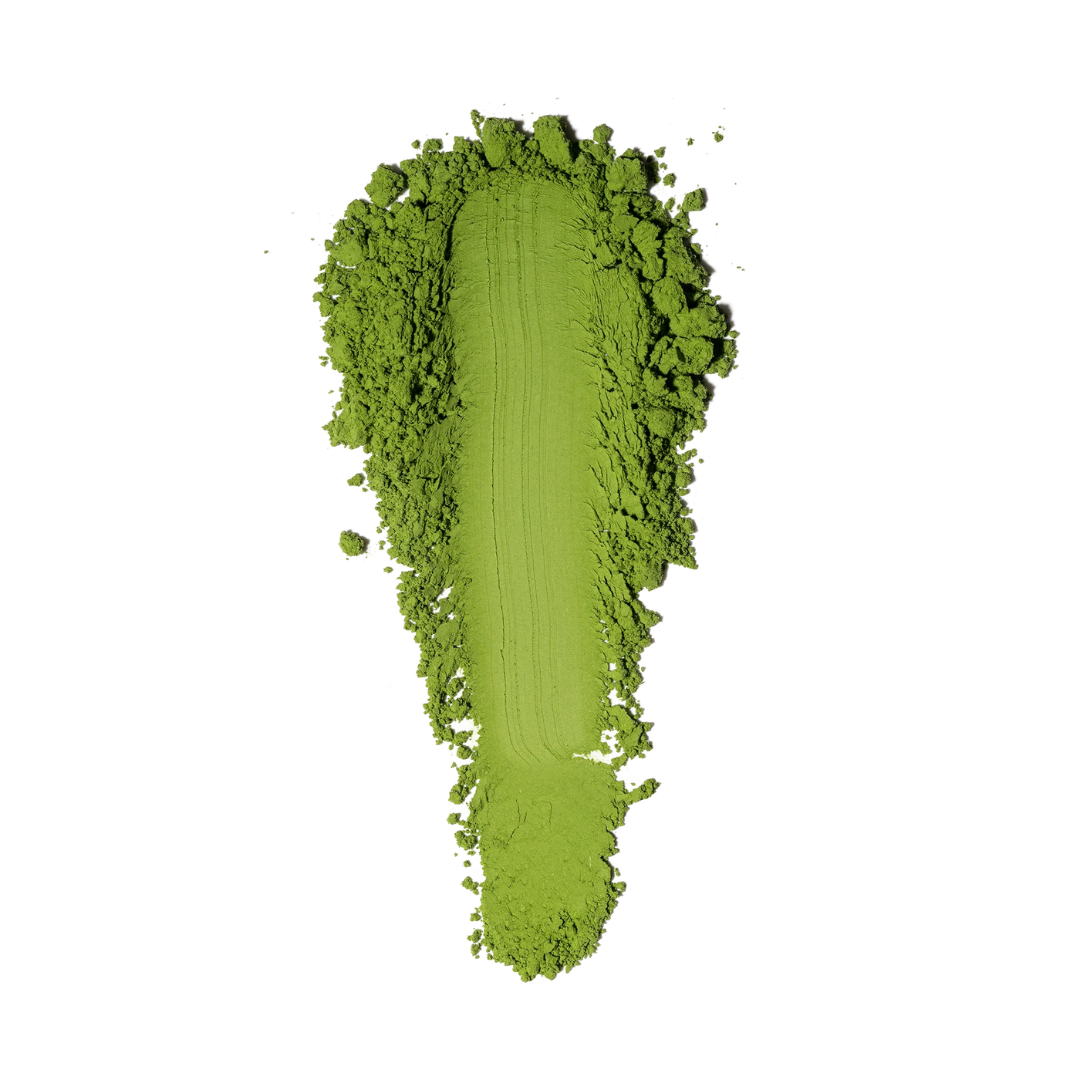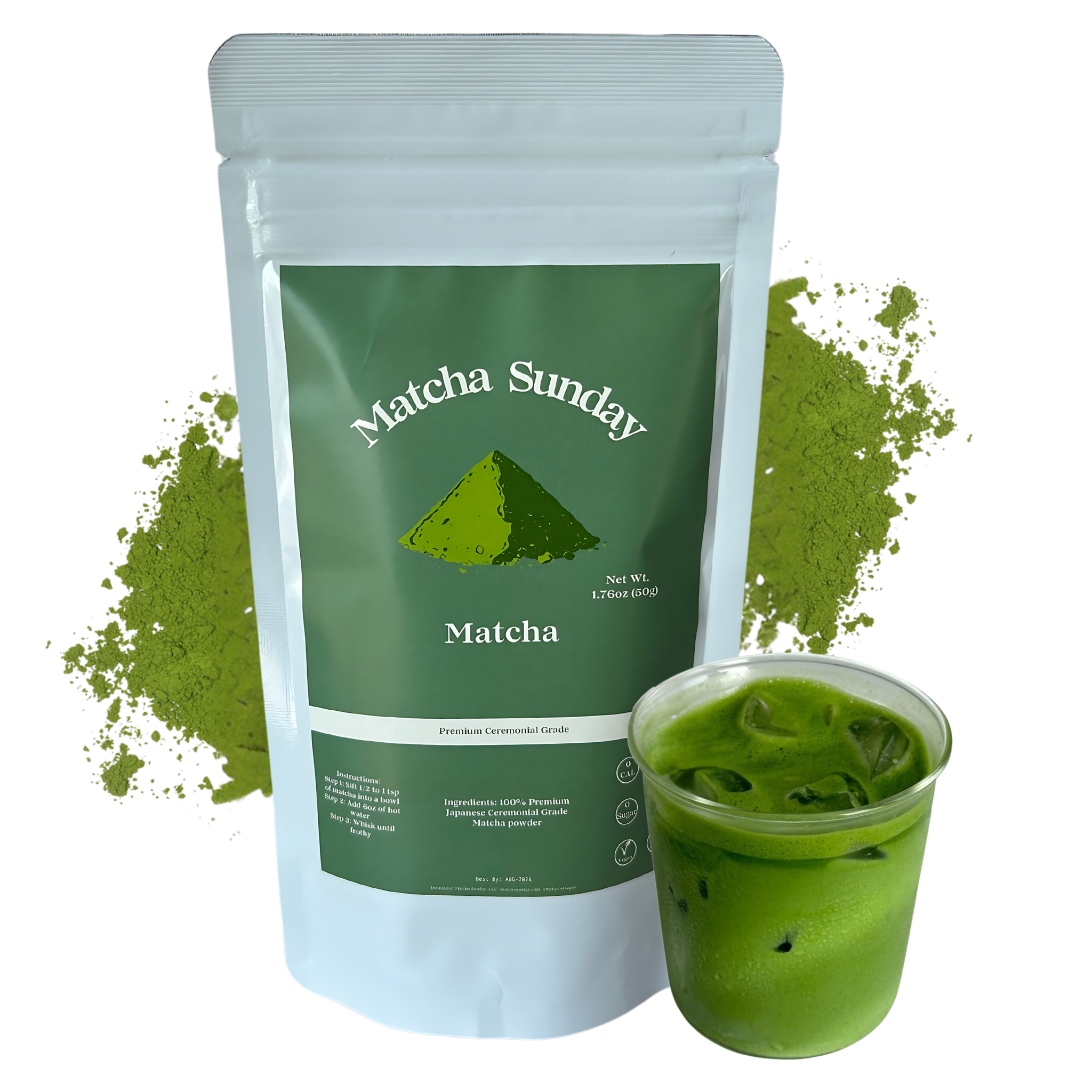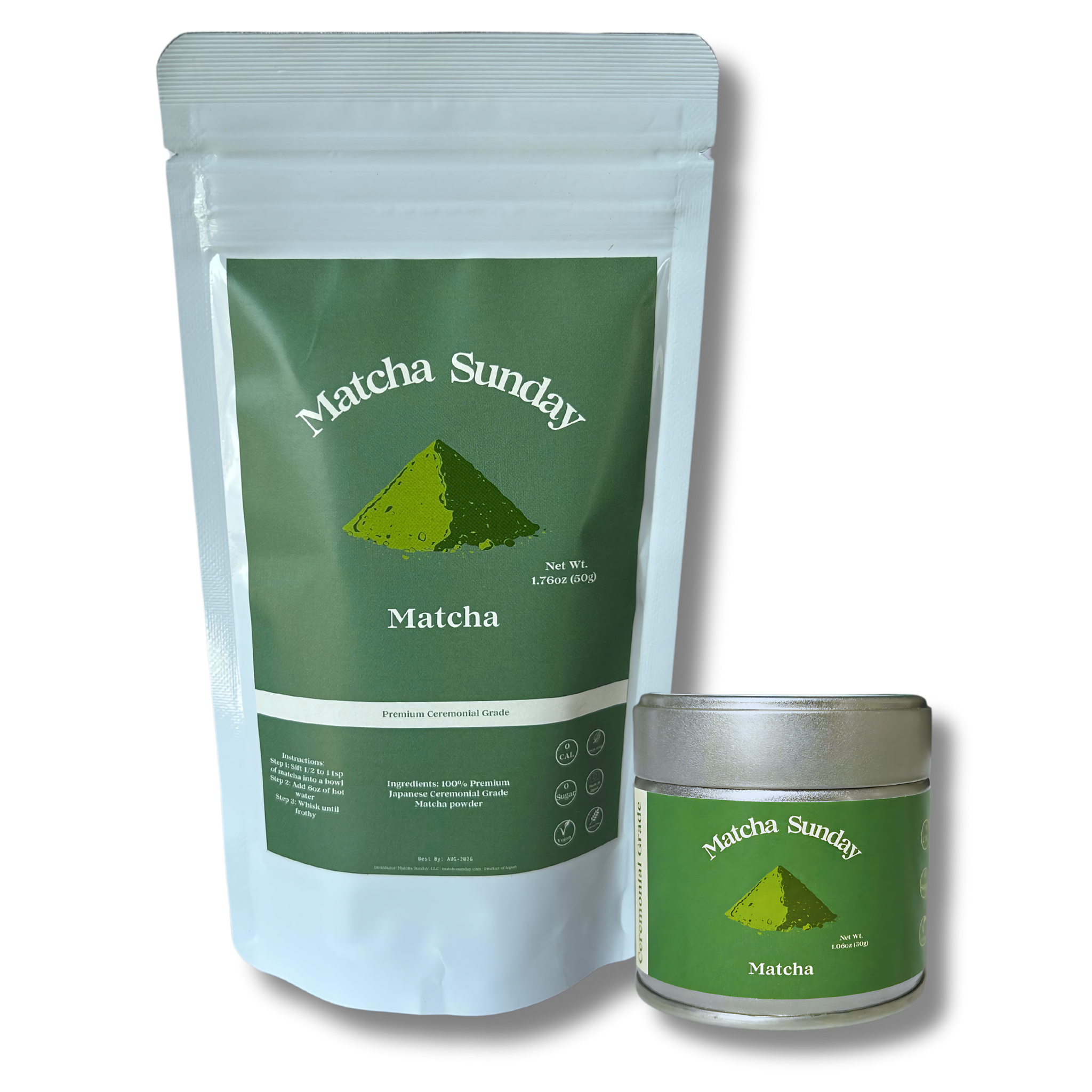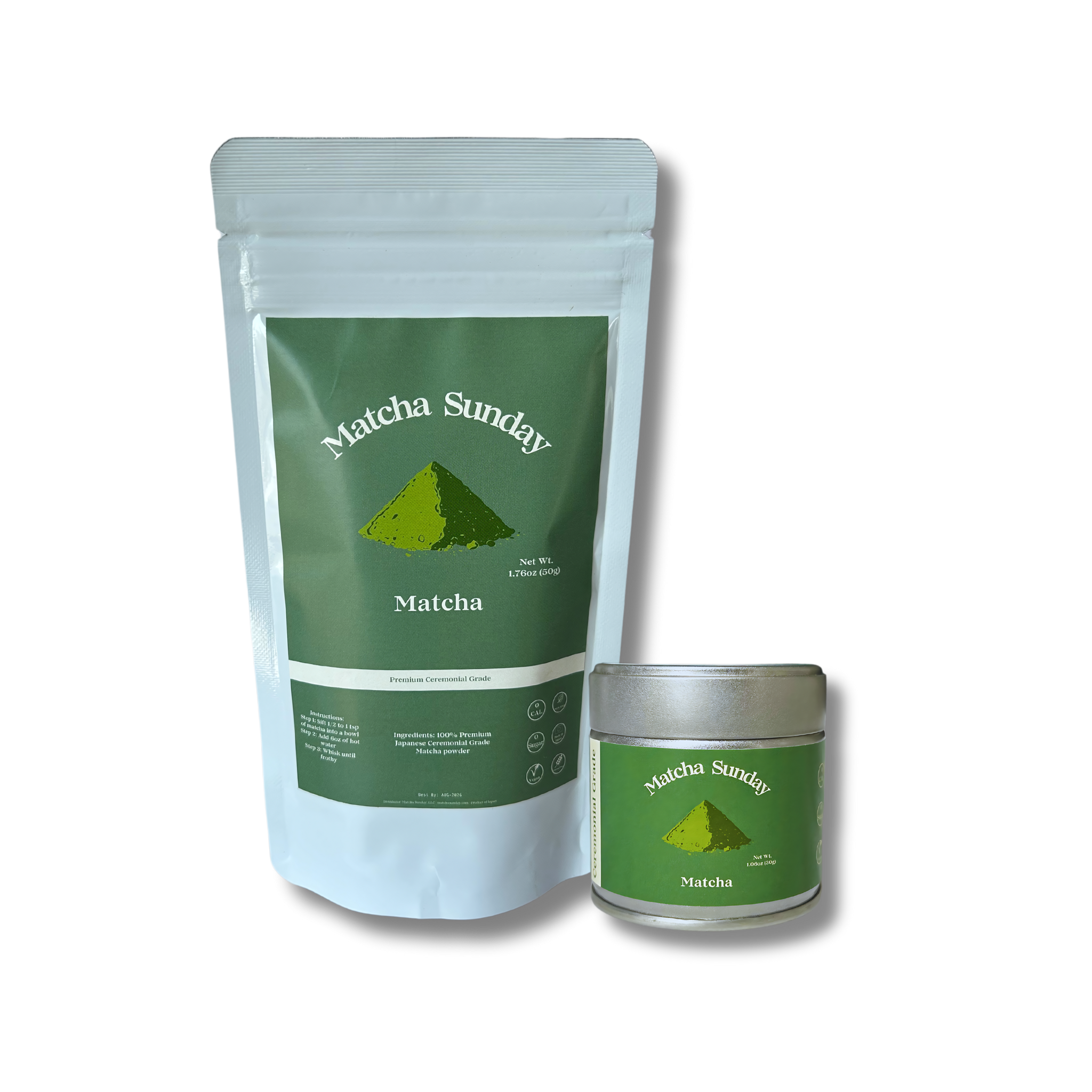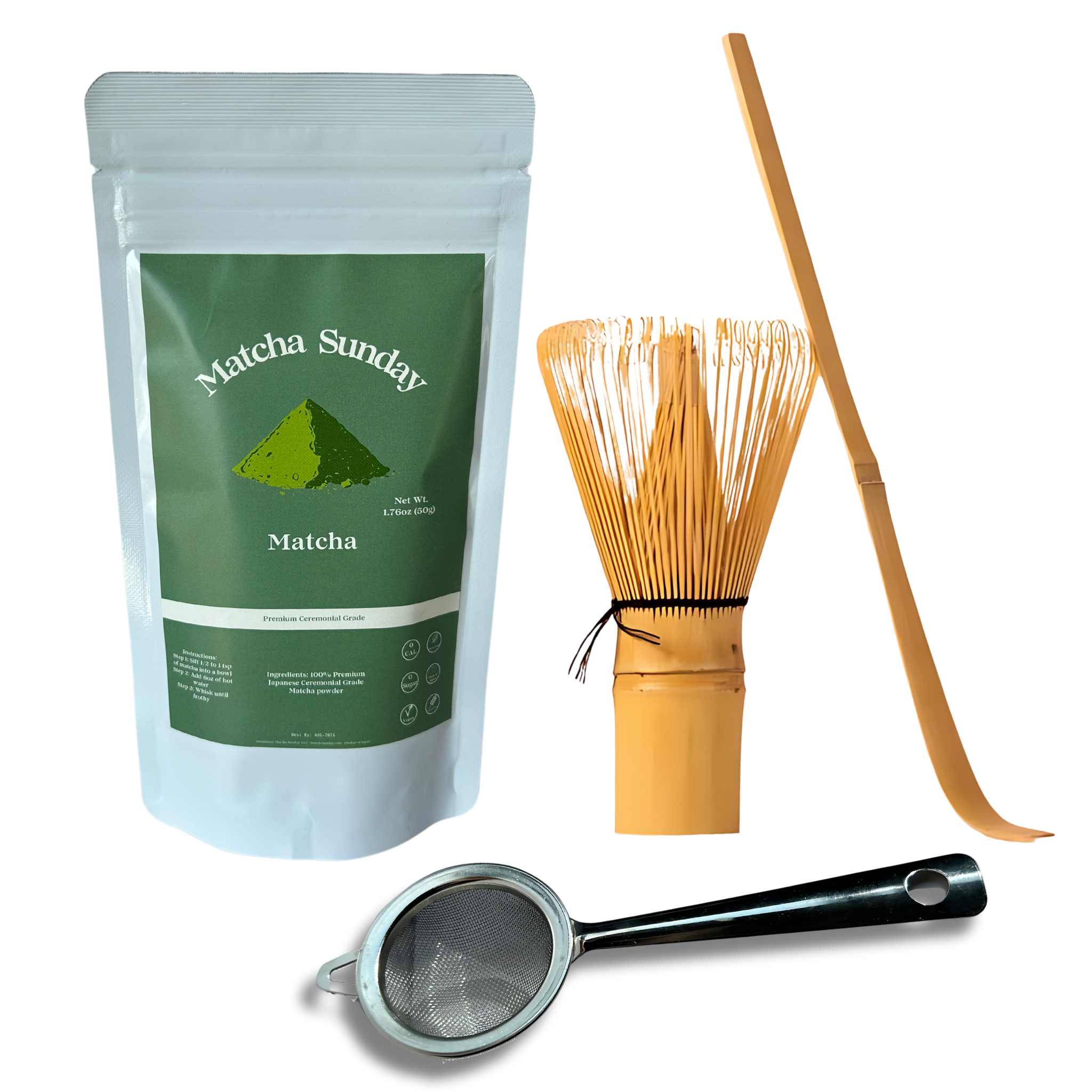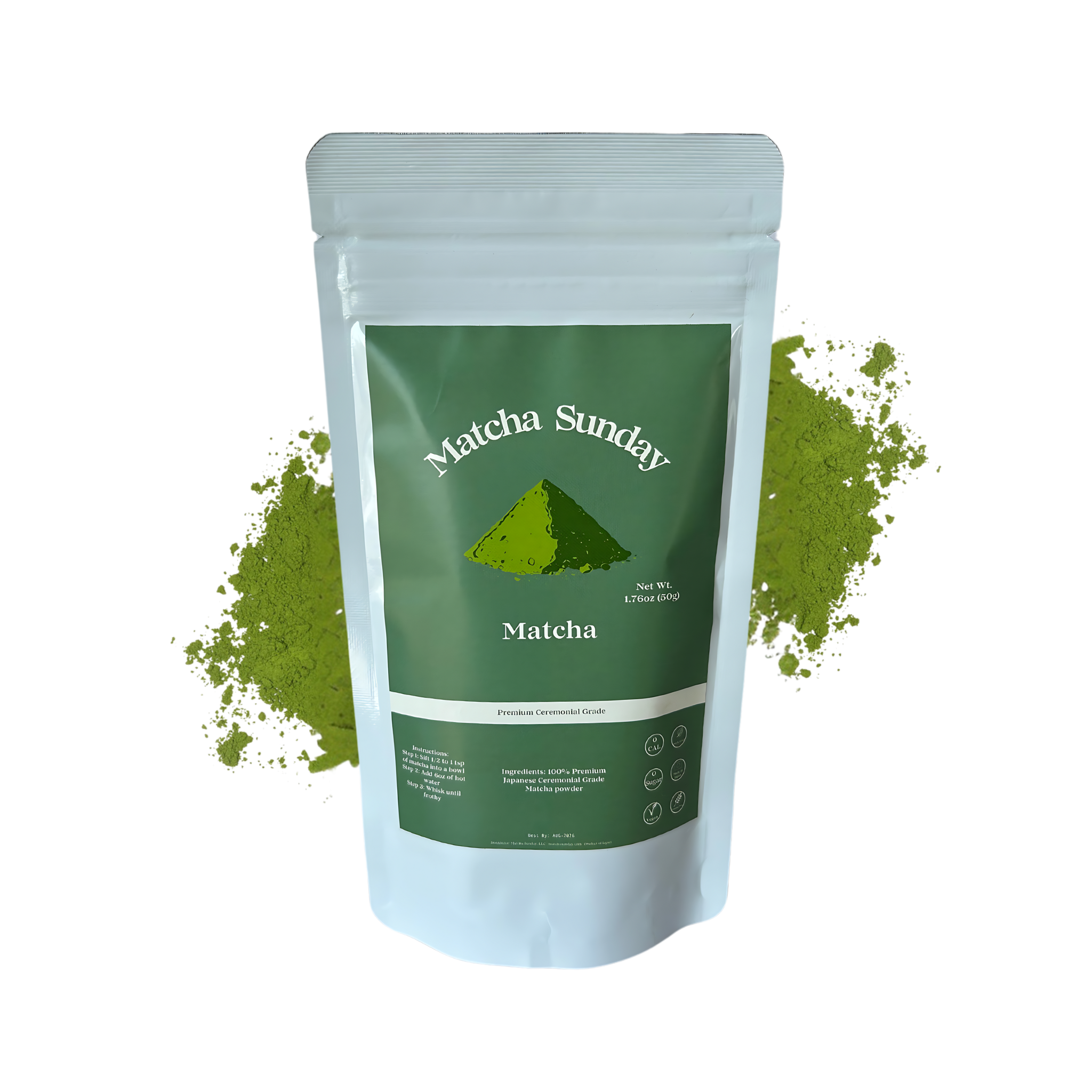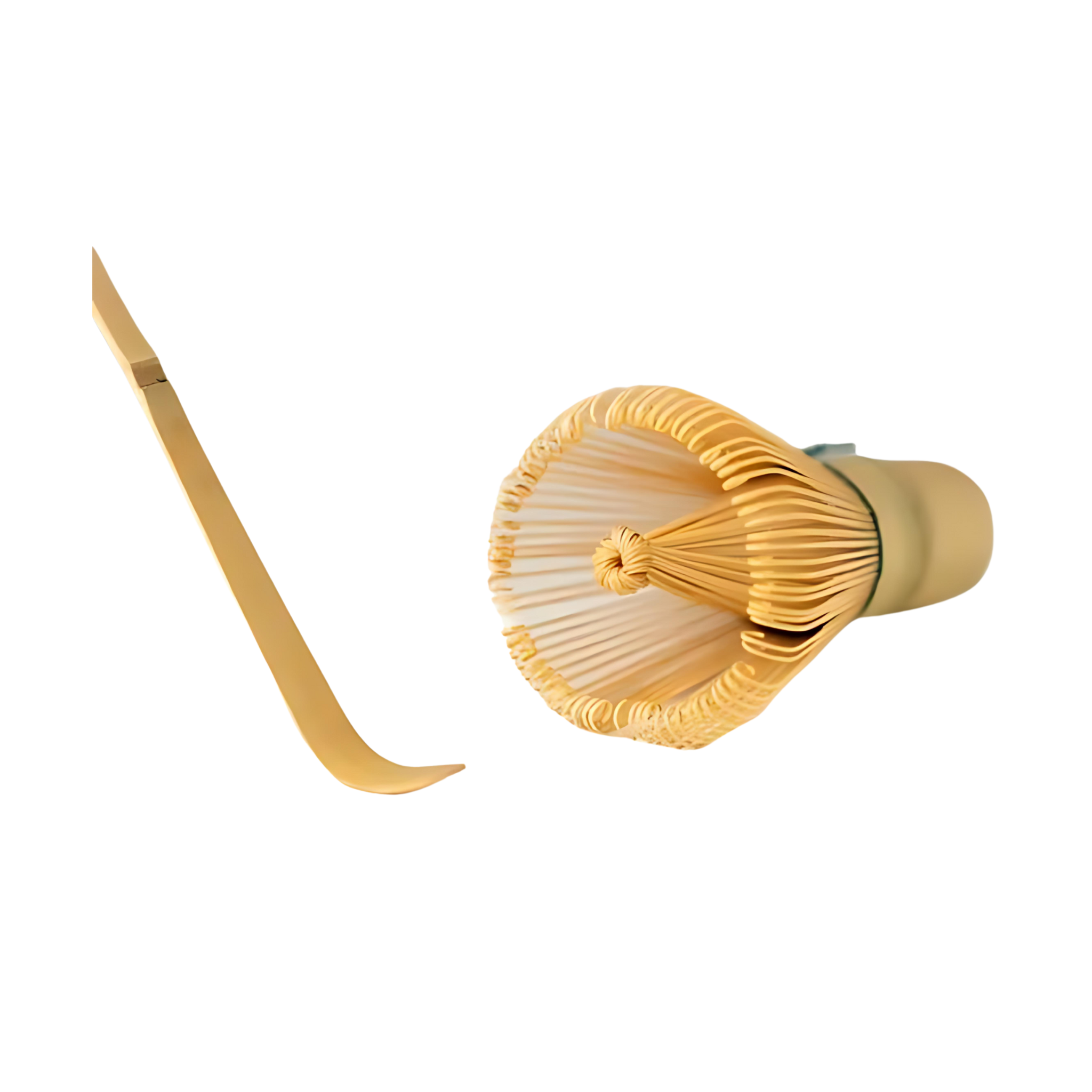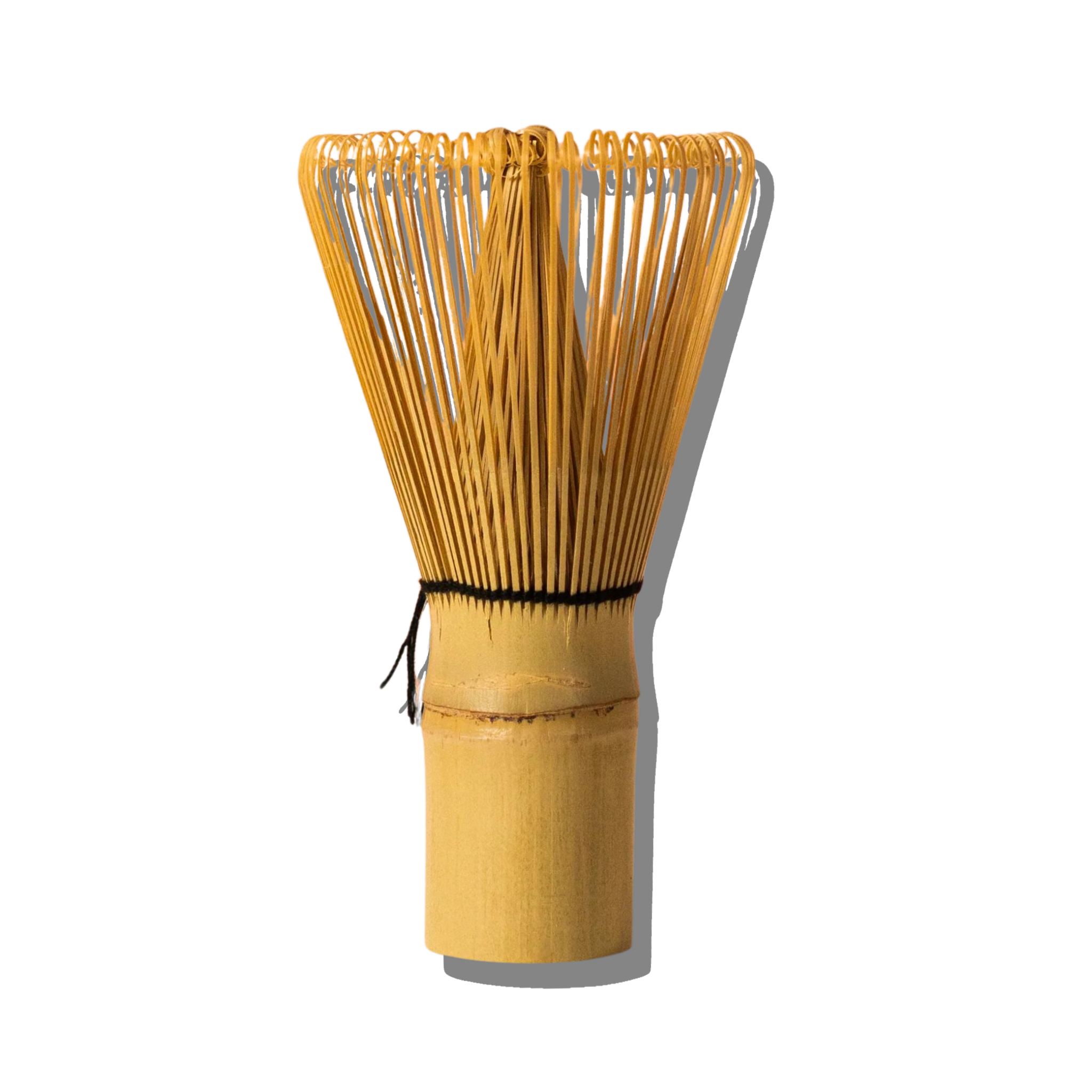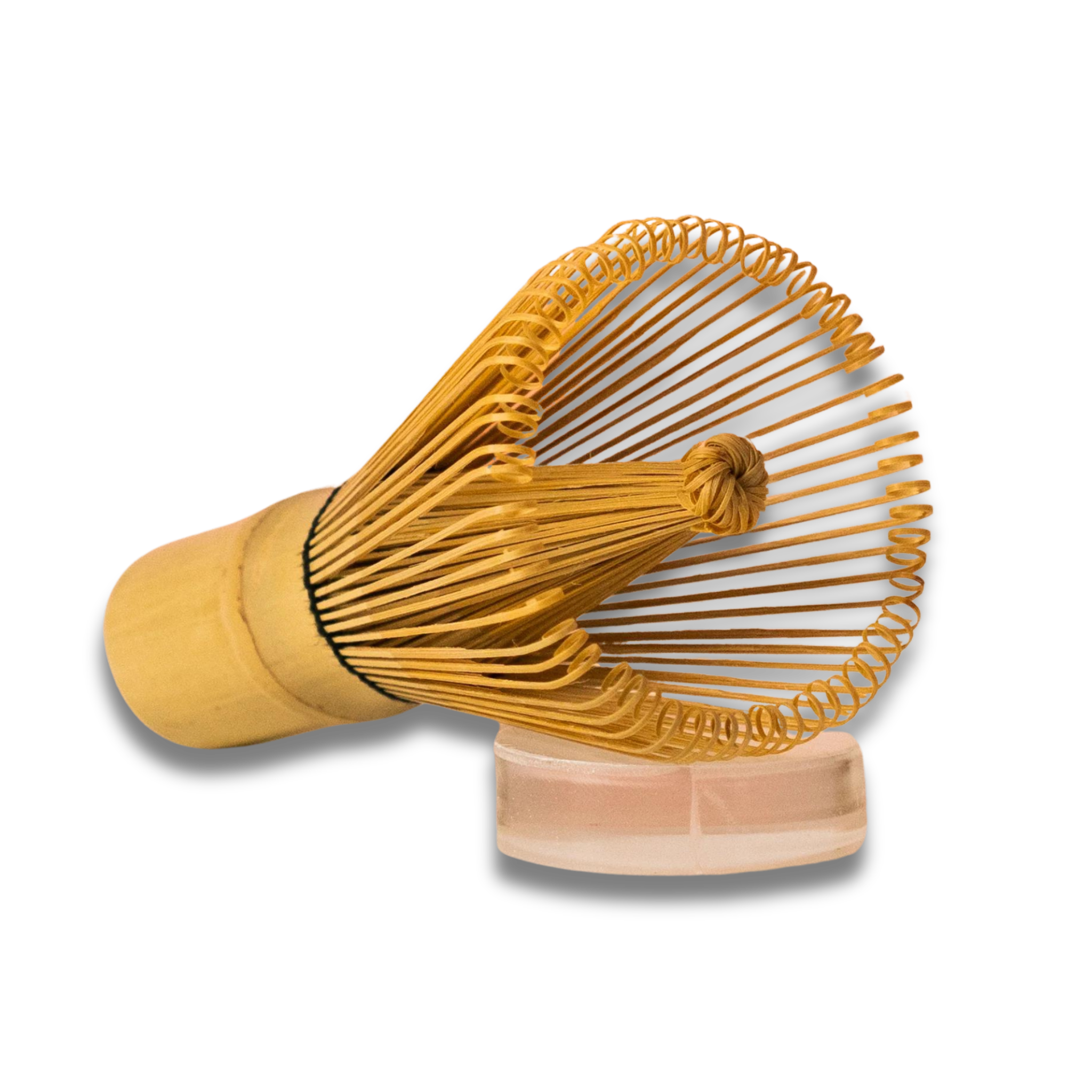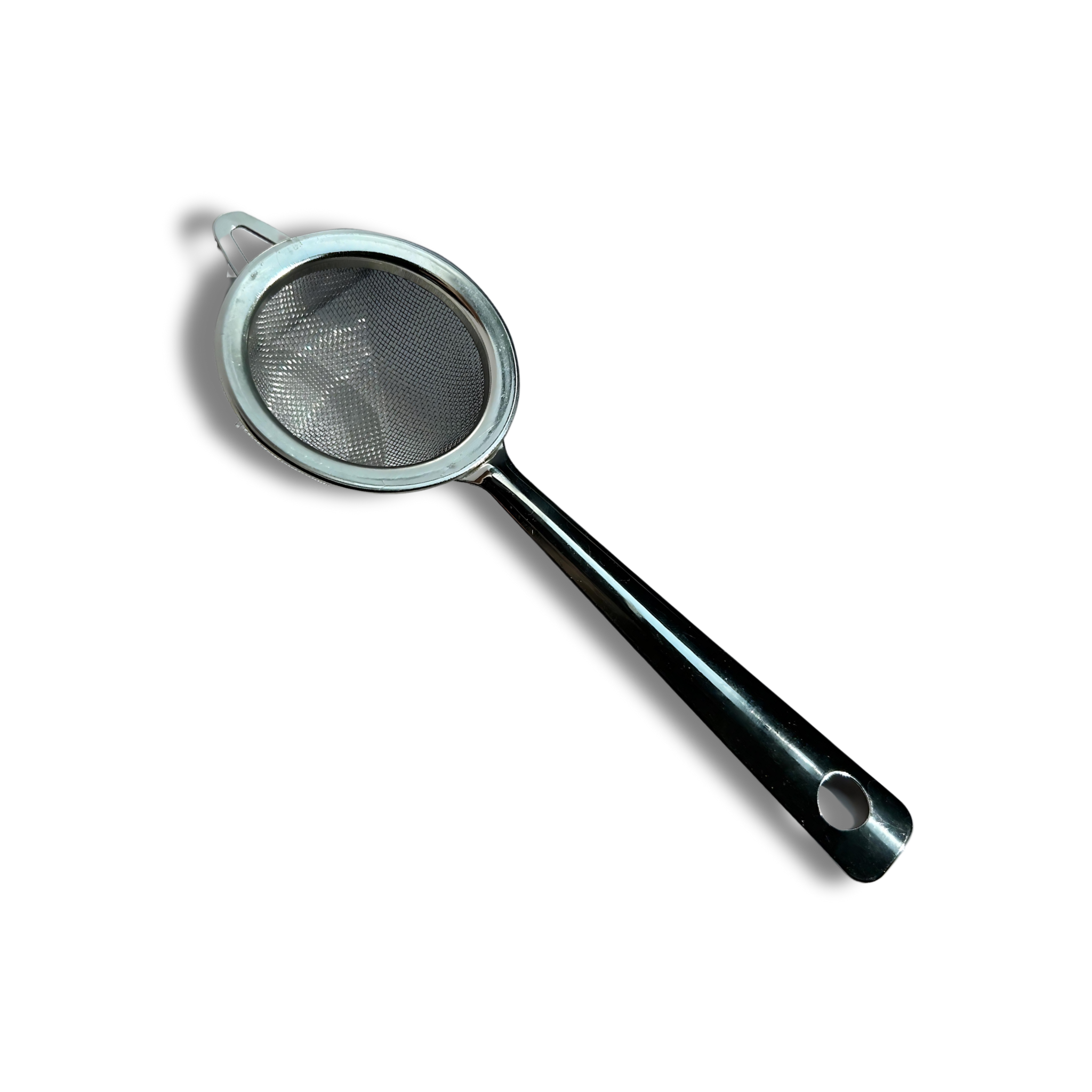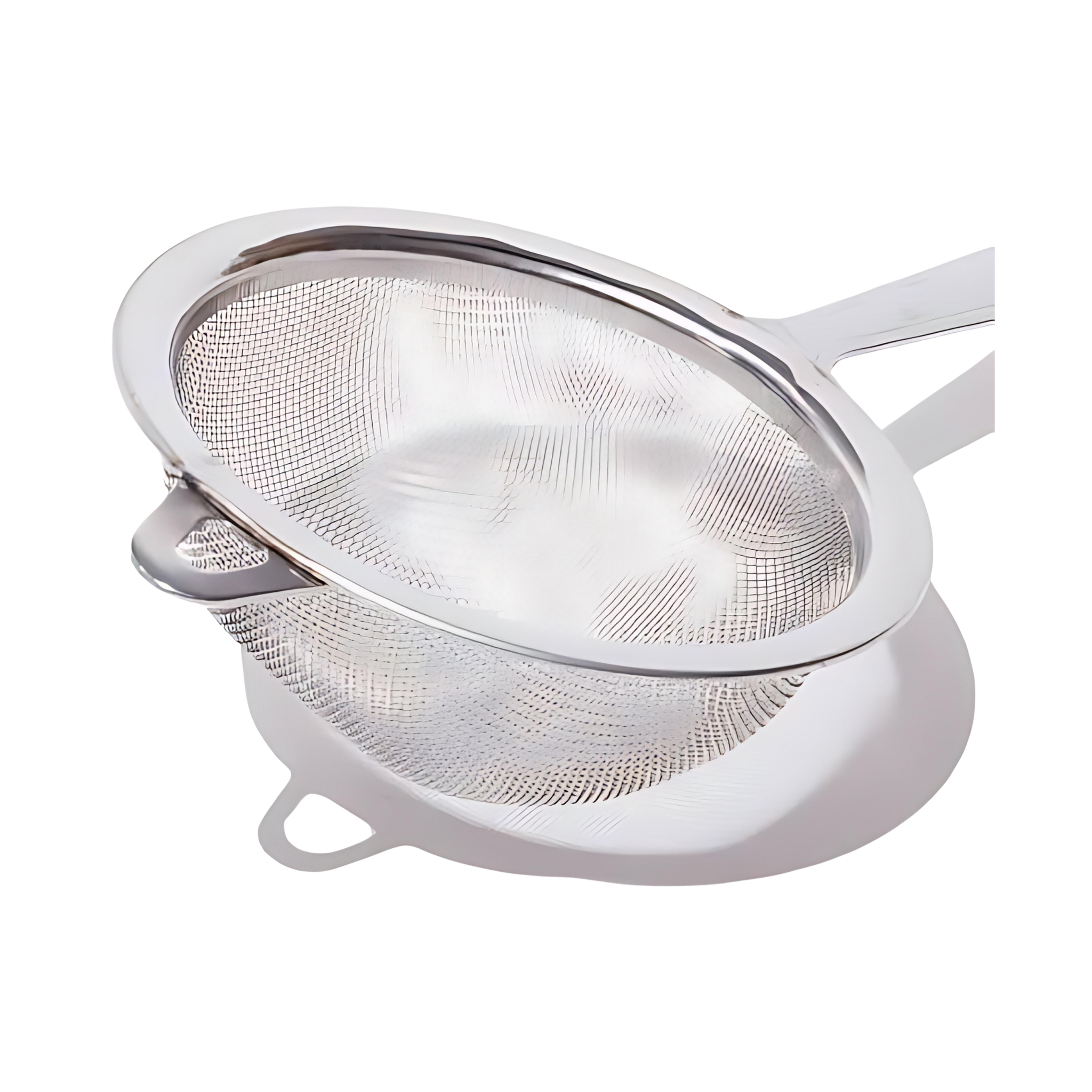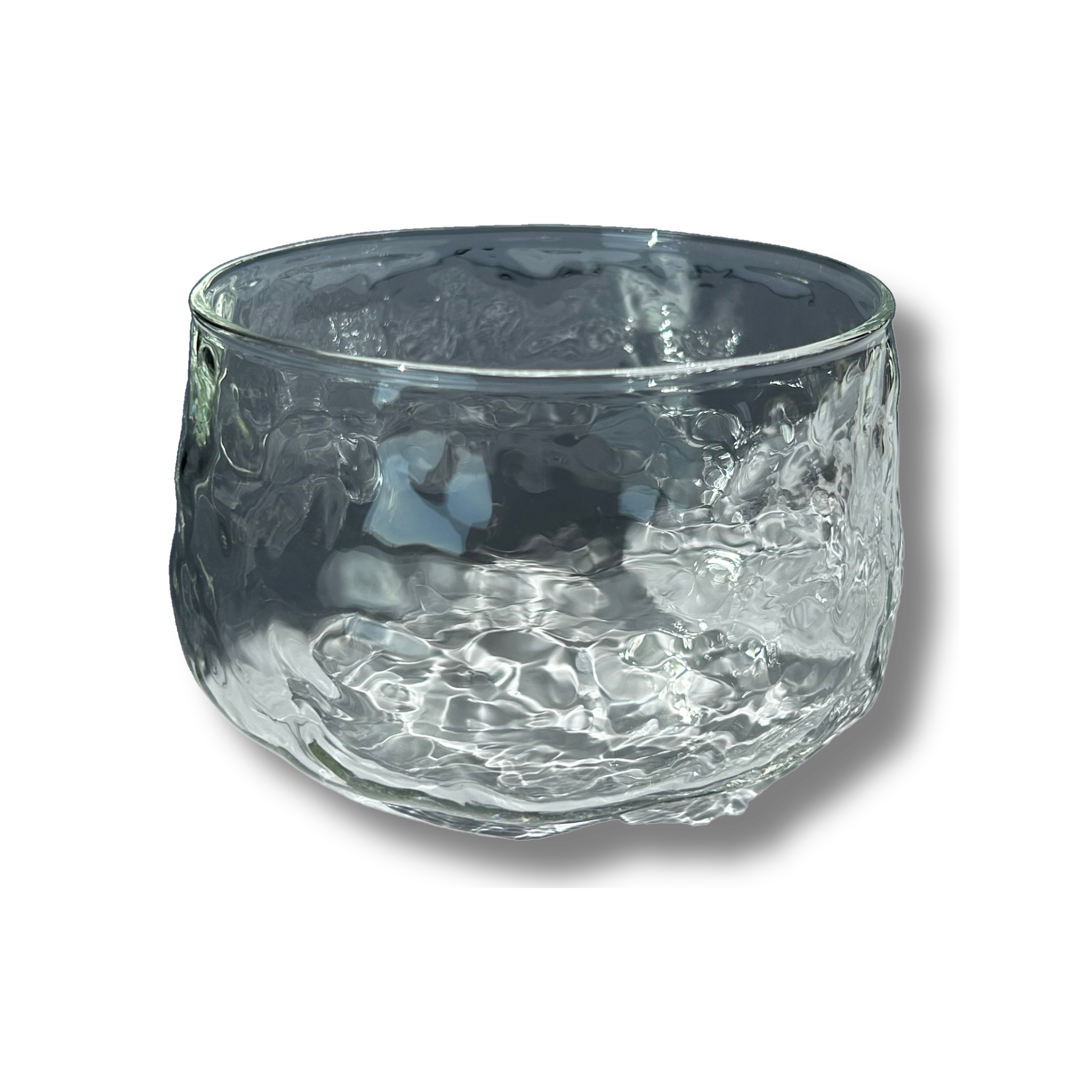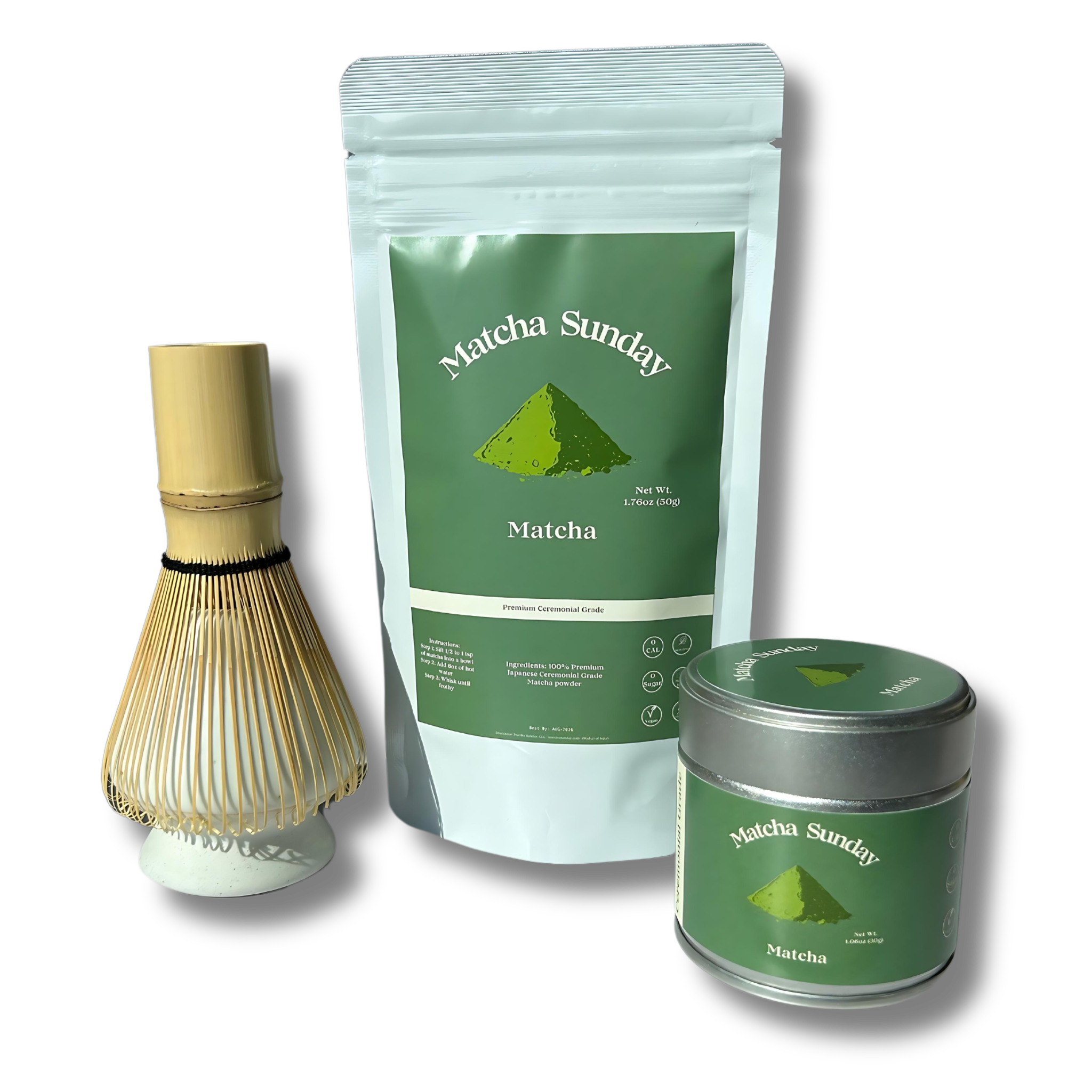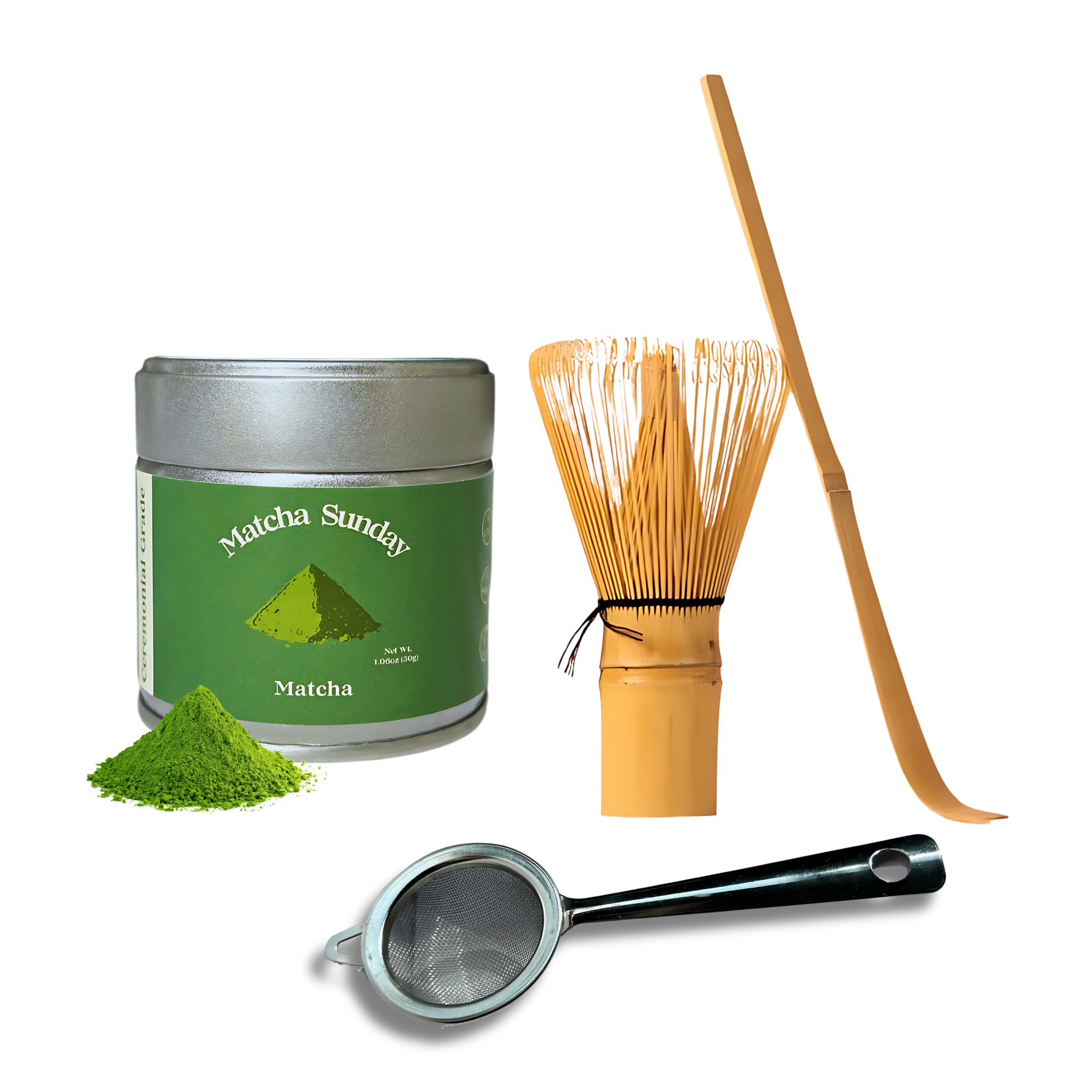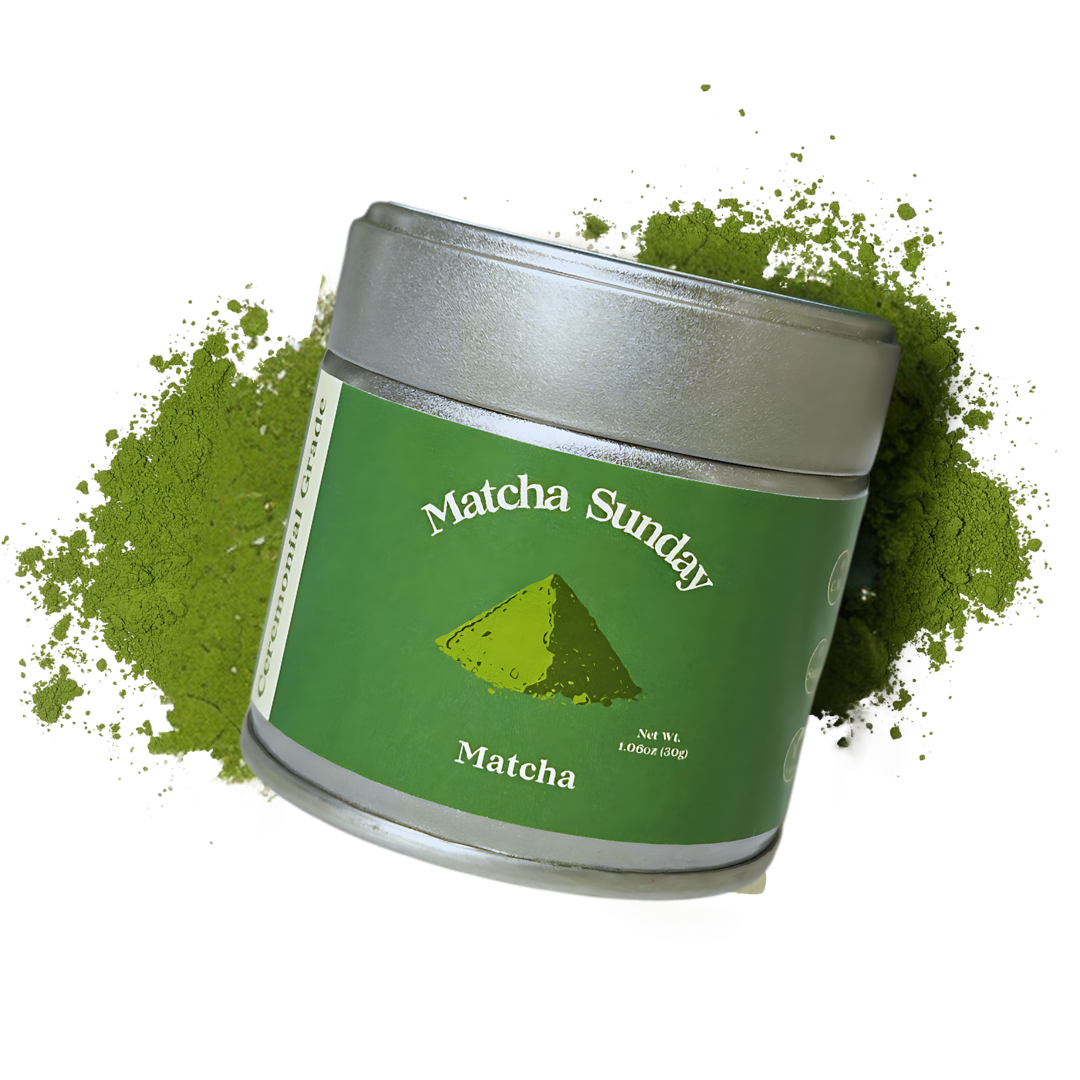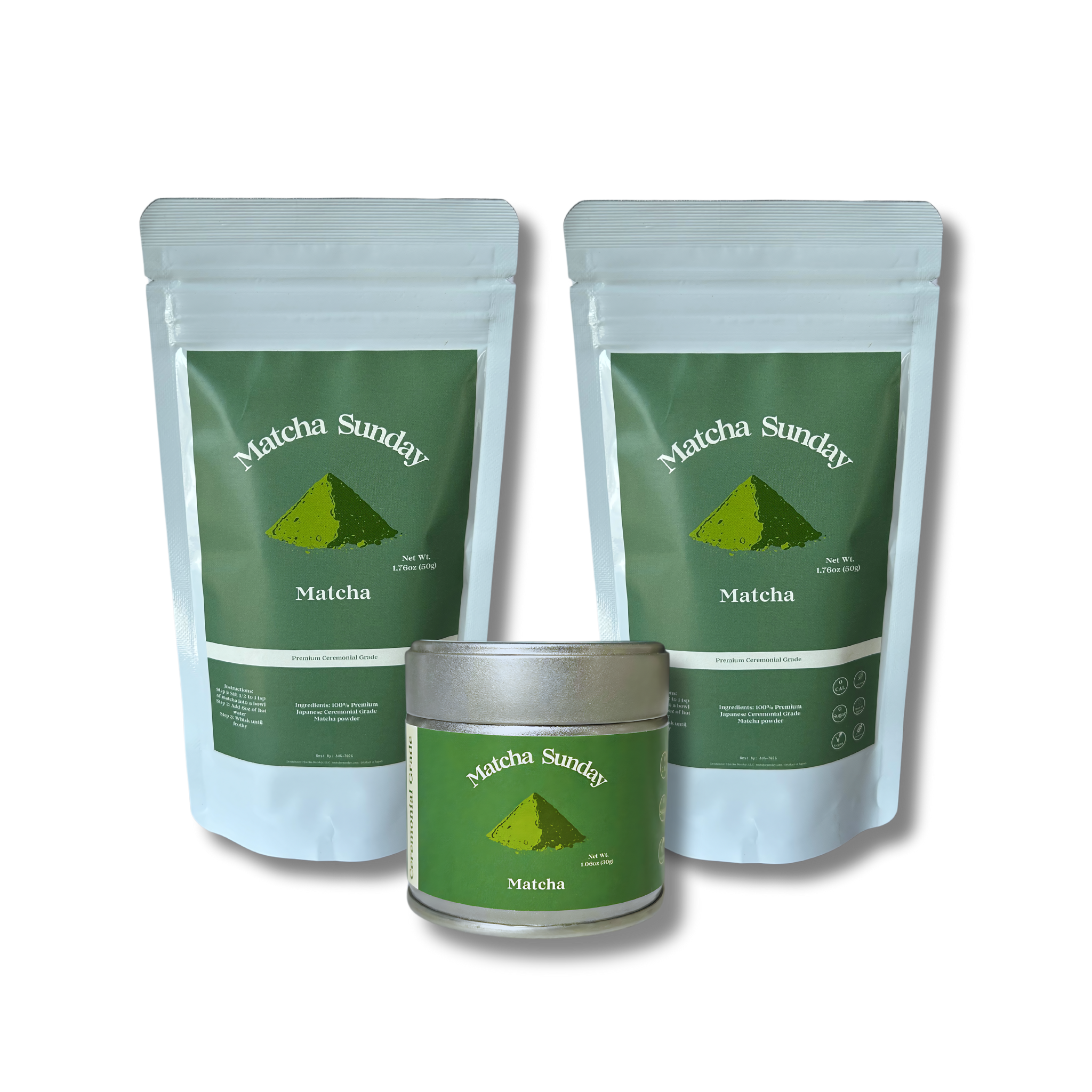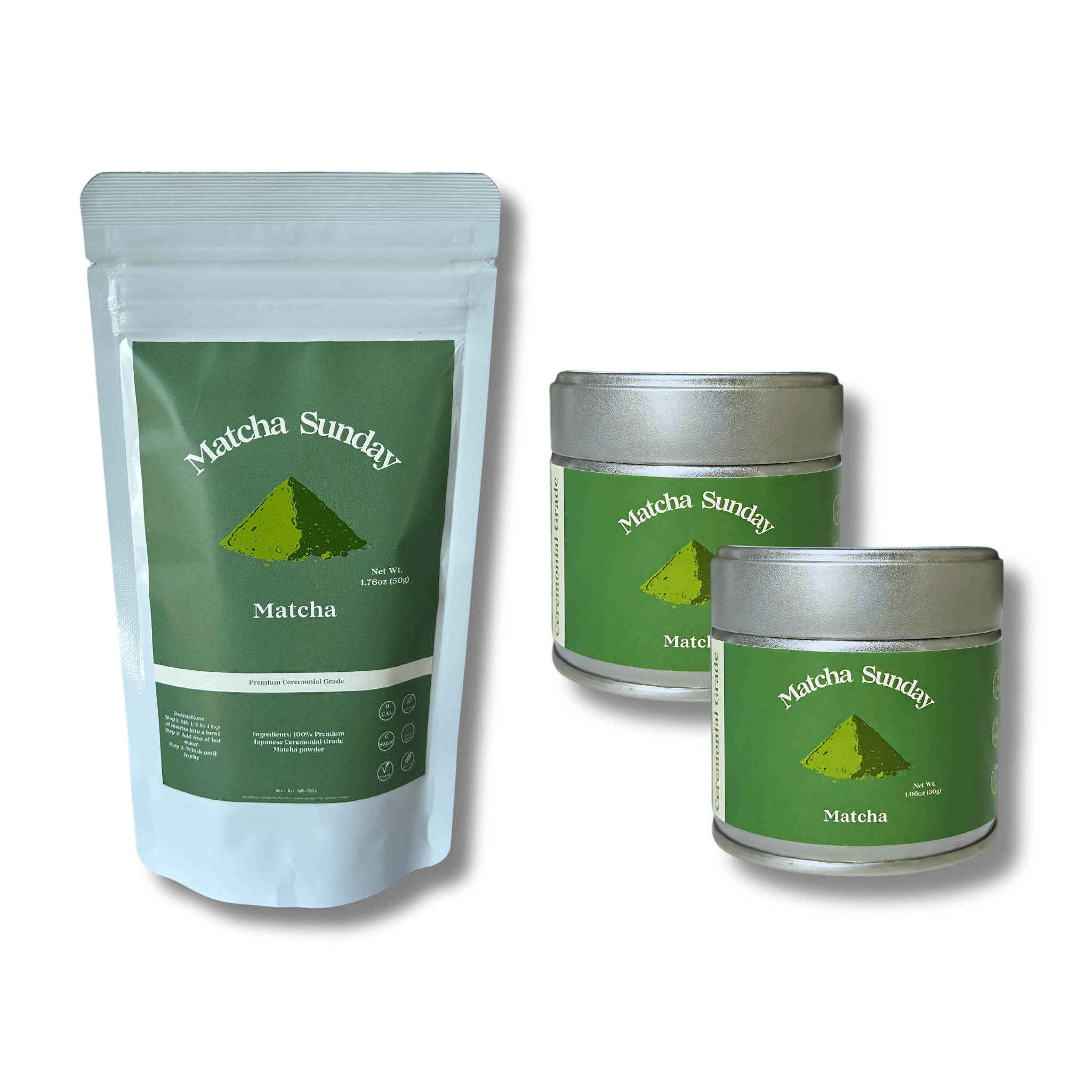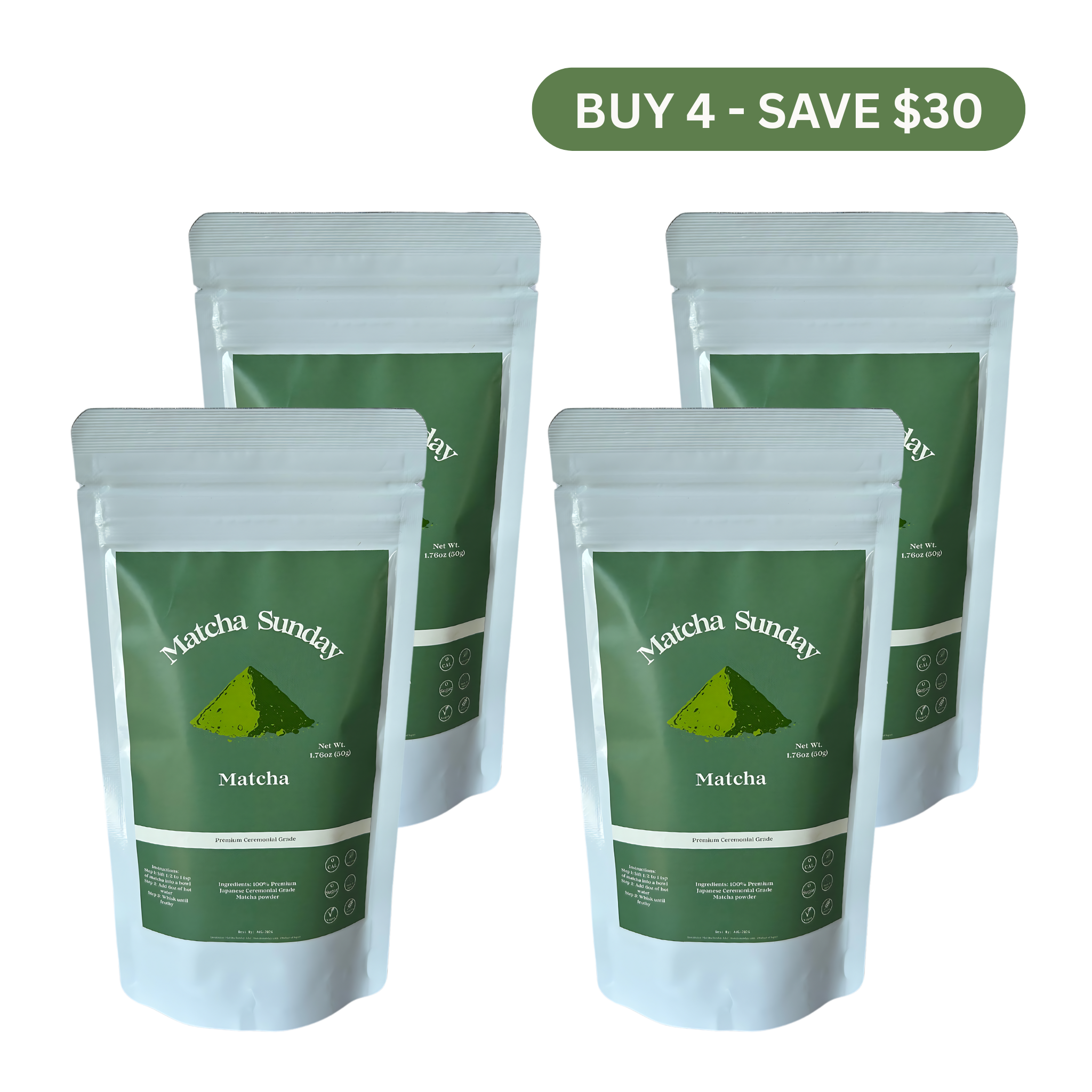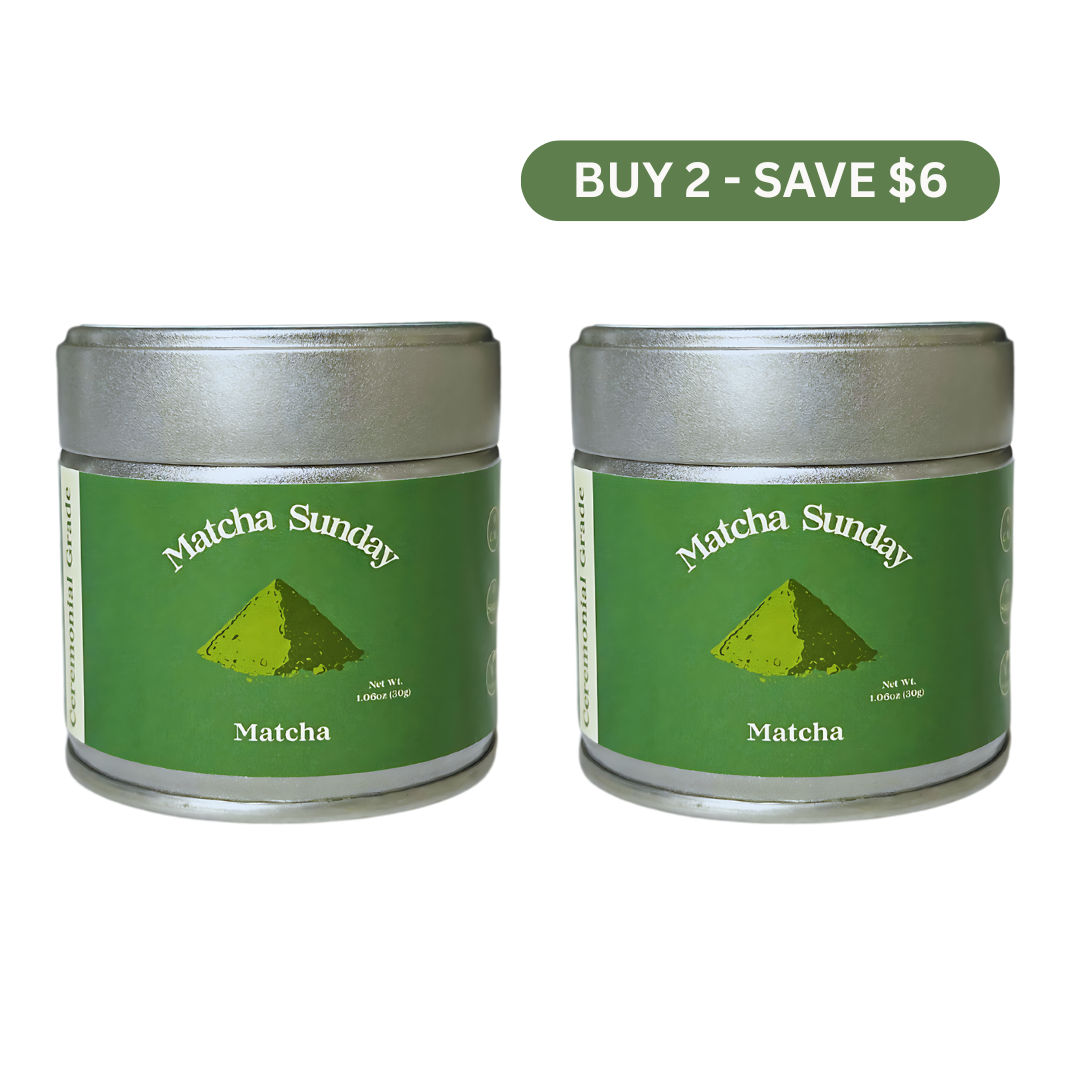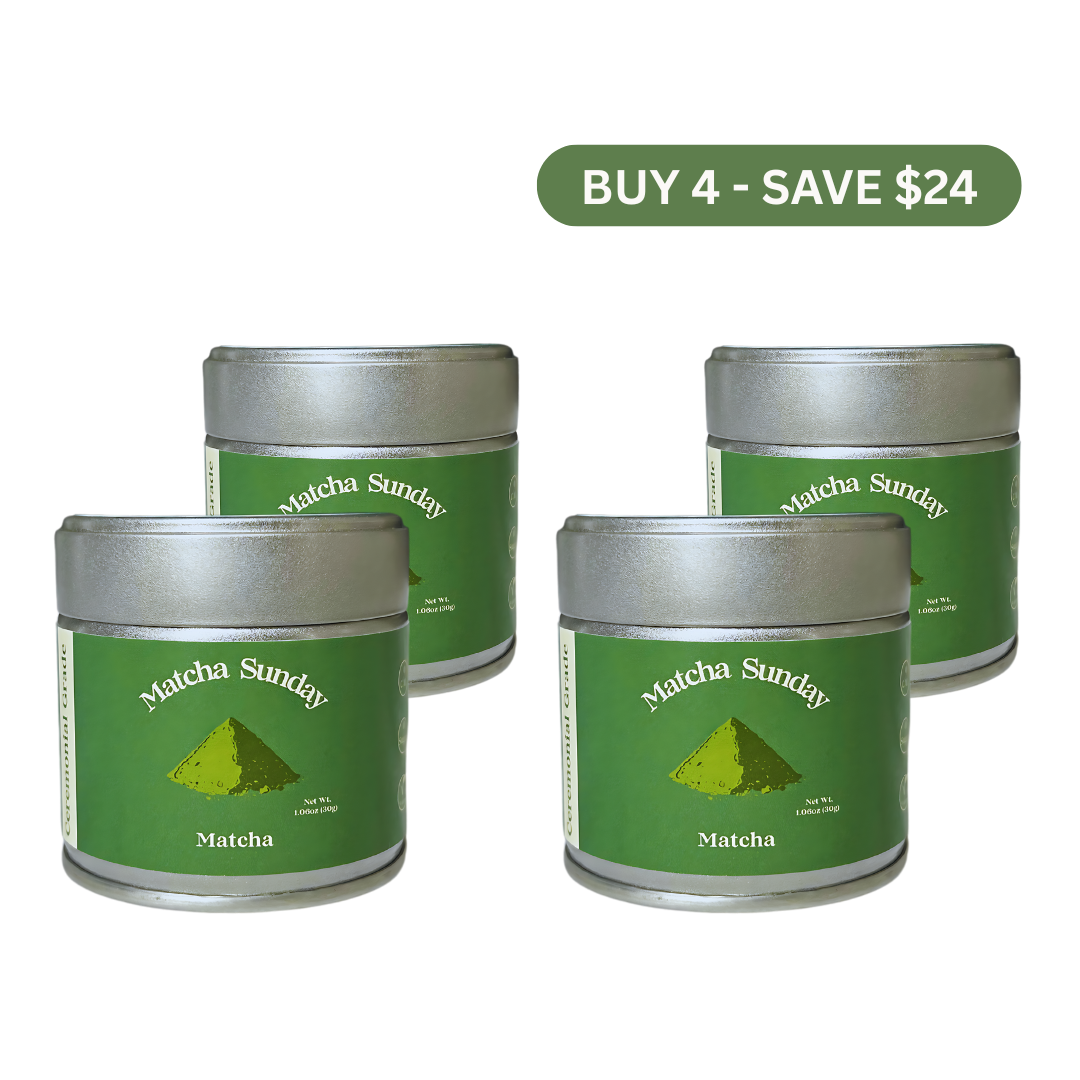Matcha lattes have surged in popularity as a delicious and nutritious alternative to traditional coffee beverages. With major coffee chains like Starbucks and Dunkin’ Donuts offering their versions, it's easy to grab one on the go. But are these store-bought matcha lattes really as healthy as they claim to be? Let’s dive deep into the nutritional aspects, ingredient quality, and overall health benefits to determine which matcha latte reigns supreme: Starbucks, Dunkin’, or homemade.

Nutritional Breakdown: Chain vs. Homemade
Starbucks Matcha Latte:
- Calories: 240
- Sugar: 32g
- Carbs: 34g
- Caffeine: 80mg
Dunkin’ Donuts Matcha Latte:
- Calories: 250
- Sugar: 33g
- Carbs: 36g
- Caffeine: 75mg
Homemade Matcha Latte:
- Calories: 120
- Sugar: 15g
- Carbs: 14g
- Caffeine: 160mg
Cost Efficiency: Saving Money, Gaining Health
Chain Coffee Shops:
- Starbucks (16oz): $5.25
- Dunkin’ Donuts (16oz): $5.89
Homemade:
- A homemade 16oz matcha latte costs approximately $3.50, including high-quality matcha powder, milk, and a natural sweetener. This not only makes homemade lattes healthier but also more economical in the long run.
Buy Ceremonial Grade Matcha Powder:
Ingredient Quality: What's Really in Your Matcha?
Chain Coffee Shops:
- Starbucks and Dunkin’ Donuts: Both use a blend of green tea powder and sugar, significantly increasing the sugar content and diminishing the health benefits of matcha. This mix is not pure matcha; it's a sweetened version that lacks the full potency of ceremonial-grade matcha.
- Added Sugars: The high sugar content in these lattes can lead to various health issues, including weight gain, increased risk of diabetes, and other chronic diseases. The American Heart Association recommends that men limit their daily sugar intake to 36 grams and women to 25 grams, meaning one of these lattes can push you to your daily limit or beyond.
Homemade:
- Pure Matcha: When making a matcha latte at home, you can use pure ceremonial-grade matcha powder, free from additives and preservatives. This ensures you’re getting the full range of matcha’s health benefits.
- Customization: Homemade matcha lattes allow for complete control over the ingredients. You can choose healthier milk options, such as almond or oat milk, and natural sweeteners like honey or maple syrup, significantly reducing the sugar content.
Health Benefits: Beyond the Cup
Sugar Content and Its Impacts:
- High sugar intake is linked to numerous health problems. By opting for a homemade matcha latte, you can drastically cut down on sugar, making it a healthier choice for your daily routine.
- Matcha contains caffeine, but it also has L-theanine, an amino acid that promotes calm and focus, providing a balanced energy boost without the jitters commonly associated with coffee. High-quality matcha used in homemade lattes offers more caffeine and L-theanine compared to the blends used by Starbucks and Dunkin’.
- Ceremonial-grade matcha, typically used in homemade lattes, is rich in antioxidants, vitamins, and minerals. These include EGCG (epigallocatechin gallate), a potent antioxidant that supports overall health, enhances metabolism, and provides anti-inflammatory benefits. The pre-mixed powders used in chain coffee shops do not offer the same nutritional value.
Making the Perfect Homemade Matcha Latte
Basic Recipe
Ingredients:
- 2 tsp ceremonial-grade matcha powder
- 8 oz hot water (not boiling)
- 8 oz milk (dairy or plant-based)
- 1-2 tsp natural sweetener (honey or maple syrup, optional)
Instructions:
- Sift the matcha powder into a bowl.
- Add hot water and whisk vigorously until frothy using a bamboo whisk (chasen) or a milk frother.
- Heat the milk separately and pour it into the matcha mixture.
- Sweeten to taste and enjoy!
Tips for the Best Homemade Matcha Latte
- Whisking: A bamboo whisk (chasen) is traditional and helps achieve the best frothy texture.
- Milk Choice: Experiment with different types of milk, such as almond, oat, or soy, to find your preferred flavor.
- Sweeteners: Use natural sweeteners like honey, maple syrup, or agave to keep the sugar content low and add a touch of sweetness.
Final Thoughts: The Clear Winner
When comparing Starbucks Matcha Latte, Dunkin’ Donuts Matcha Latte, and homemade matcha lattes, making your own matcha latte at home is the healthiest choice. Homemade matcha lattes offer lower sugar content, higher nutritional value, and better cost efficiency compared to those from Starbucks and Dunkin’ Donuts. By opting for high-quality matcha powder and controlling the ingredients, you can enjoy a delicious and healthy beverage every day.
References
- Rippe, J. M., Sievenpiper, J. L., Lê, K. A., White, J. S., Clemens, R., & Angelopoulos, T. J. (2017). What is the appropriate upper limit for added sugars consumption?. Nutrition reviews, 75(1), 18–36. https://doi.org/10.1093/nutrit/nuw046

